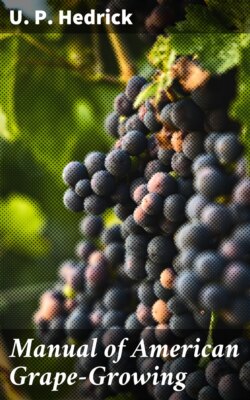Читать книгу Manual of American Grape-Growing - U. P. Hedrick - Страница 42
На сайте Литреса книга снята с продажи.
Proximity to water.
ОглавлениеThe favorable influences of water are well illustrated in the grape regions of New York, Pennsylvania, Ohio and Canada. All of the grape districts in these regions are bounded on one or more sides by water. The equalizing effects of large bodies of water on temperature, warmer winter and cooler summer, are so well known as scarcely to need comment. Hardly less important than the effects of water on temperature are the off-shore breezes of night and the in-shore breezes of day which blow on large bodies of water. These keep the air of the vineyard in constant motion and so prevent frosts in spring and autumn, and also dry foliage and fruit so that spores of fungi have difficulty in finding foothold. But if water brings fogs, dews and humidity, as does the Pacific, grapes must be planted inland; otherwise leaf, bloom and fruit are born in the blight of fungi. The benign influences of water are felt in the eastern grape regions at distances of one to four miles, seldom farther. These narrow belts about the eastern waters are bounded on the landward side by high bluffs over which many showers fail to pass and which protect the belts below from heavy dews. Where the background of bluffs in these regions sinks to level land, vineyards cease.
Vineyards are usually some distance above the water, the range in altitude running from fifty to five hundred feet. Where the altitude is much higher, immunity to frosts and winter freezing ceases, for the reason that the atmosphere is rarer and drier so that heat radiates rapidly from the land. As the height increases, also, the revels of the wind play havoc with the vines. Yet, one is often surprised to find good vineyards at the level of the lakes or, on the other hand, crowning high hills. Altitude in grape-growing must, therefore, be determined by experiment. We know very little of the formation of the thermal belts on high land so favorable to the grape.
